
Don't get lost.
"Just keep the sea on your right-hand-side and you can't go wrong" someone said as I was starting to walk the South West Coast Path from Minehead. If only it was that easy. I used a set of SWCP guide books which had small sections of Ordnance Survey maps of the coastline in them, but I still managed to miss the path several times and had to back-track. That was in 1999 when phones with map apps didn't exist. Things have changed since then.

I have a subscription to Ordnance Survey Maps which gives me on-screen access to all OS maps and the ability to print any part of them at home from my laptop. So I often print A4-size 1:25k-scale copies of my route. Normally a days walk will fit onto one or two pages if printed double-sided. I put the map(s) for the day into a thin plastic sleeve, the type used to file papers in a ring-binder, and fold it small enough to fit into my pocket so as to be easily accessible.
If necessary I can use the OS Maps app on my phone to check my exact location as I walk. I can also download maps to the phone in advance in case there might not be a decent phone signal.
What I learned: Not to convince myself that the route is so obvious that there is no need to check a map.
Before you start, stop.
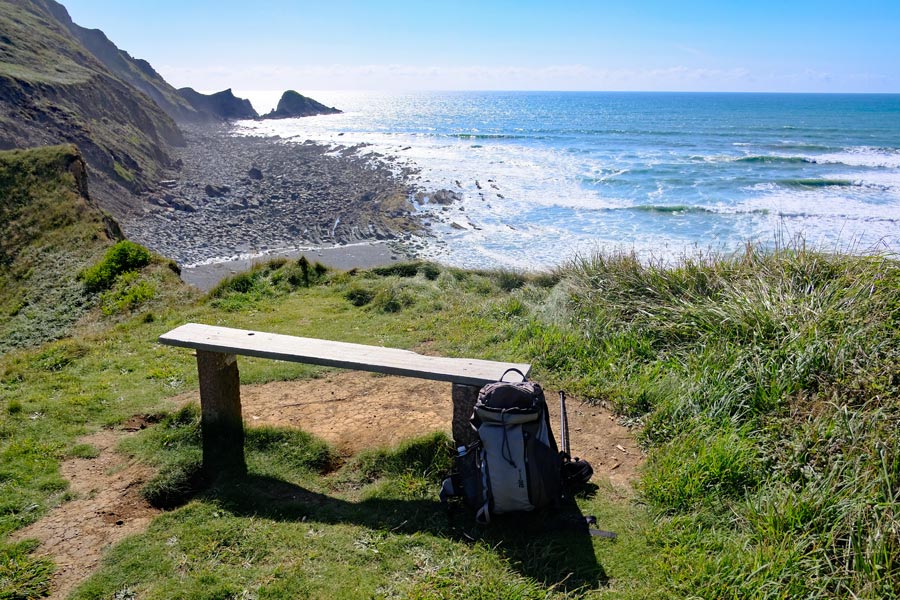
After having a lunch break and then walking a mile before realising that I no longer had my cap with me, causing an extra 2 miles of walking to retrieve it, I learned to always check that I had not left anything behind after stopping for a rest or a snack. Now I say to myself "before you start - stop," to remind me to stop and look around before walking off. I also make it a habit of stopping regularly and turning round to look back in case I may have missed a good view and the chance of a good photograph.
I always keep a small foldable foam-rubber pad in my rucksack that I can use if where I want to sit is wet, or too hard for my skinny bum.
Traveling light.
When out for the day I usually take a 35 litre rucksack. It's a nice size and doesn't get in the way too much when on a bus, in a small shop, or in a pub. On a long trek I will take a 55 litre pack. I used to take a one-man tent, sleeping bag and inflatable mattress for use when I didn't find or didn't need accommodation, but nowadays I prefer to travel lighter and take a bivvy bag, sleeping bag and sleeping mat.
What I learned: To pay a little extra and get the lightest and best sleeping gear available (for a sensible price).
Clothing.
I tend to wear walking clothing such as trousers, shorts, tops and base layers made of or containing polyester. Polyester is a 'wicking' type fabric, and unlike cotton, it does not soak up and retain moisture. It is often used in 'technical' clothing, which will probably cost more. But it will help to evaporate sweat and keep skin dry. Also, when staying at accommodation, it is possible to wash dirty or smelly items at the end of the day and get them dry by the morning.
What I learned: To wash the garment while showering and wring it out until just damp. If there is a chance that it won't be dry by the morning I lay out a dry towel, lay the garment onto it, roll up the towel and walk on it for a minute. Then I unroll and hang the damp garment near an open window or radiator.
Similarly, with outer-garments for cold or wet weather, it pays to buy 'technical'clothing that was designed for the job.
What I learned: Pay up and don't skimp on clothing if you want to be more comfortable.
Having said that, I sometimes find that the wet-weather outer-garments that use breathable fabrics such as Gore-Tex can still be too warm for me when I am walking.
What I learned: To carry a small fold-out umbrella in my pack for use on such occasions - providing the wind is not too strong.
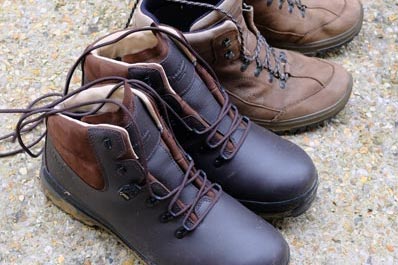
Feet.
I cannot recommend any particular walking boots as there are so many good ones on the market. If I buy new I wear them for a day or two at home so that I can return them if they are not comfortable. A Gore-Tex or similar waterproof lining is essential. At the moment I wear Scarpa Cyrus GTX mid boots for day walks and Berghaus Hillmaster II GTX boots for long treks. They are a heavier than my Scarpas but I should get more mileage out of their thicker soles.
What I learned: To wear one pair of socks and keep a second pair in my pack. When on a long trek, when I stop for a rest I often take my boots off to air my feet. If my socks are damp I take them off and let them dry. Or if I don't have time to do that, I put my second pair on and hang the damp ones on my pack so that they dry out as I walk. Damp skin can get soft and become more liable to rub and blister.
I always carry at least one pole when walking. Usually two if steep climbing and descending is involved. I found them to be very handy for several reasons: Three legs are more stable than two, and four legs are even better, especially in mud or on slippery rocks; Cars don't get so close to you in country lanes if your pole is pointing out into the road a little; Brambles and stinging nettles can be broken down before you get to them by a well aimed swipe with the sharp tip of a pole.
I find that two poles make steep hill climbing much easier when my arms are taking part of the load. Similarly they take the pressure off my knees when going downhill. Plus they can prevent the dreaded 'going-downhill-out-of-control' situation from happening. When the going is easy I prefer not to use them, so I collapse them and stow them horizontally in the gap produced by the air-space webbing of my rucksack, where I can quickly pull them out again when needed.
Ticks: A warning.
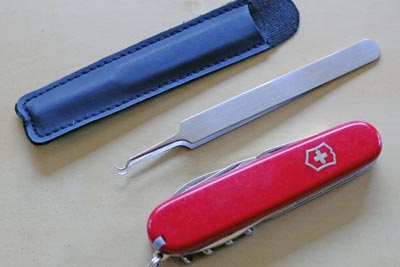
I always carry a tick remover in my rucksack because removal must be done properly so as not to leave tick mouth-parts embedded in the skin. If I am wearing shorts and am cross-country walking I regularly check for ticks. I have had to remove several over the years.
A tick remover has two tiny hooks that are placed around the head-end of the tick. Then the tick can be gently lifted straight up, complete with its nasty little mouth-parts.
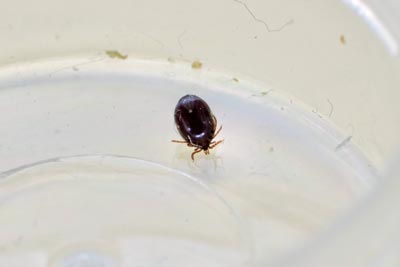
But I missed one once! After a walking trip I found one attached high up on the back of my leg, much higher than I had checked. It was no more than 3mm long. It must have been there for at least a day because after finishing my walk I had taken a long bus ride followed by a long train journey, followed by a car ride, then at home, a shower and a good nights sleep. I didn't find it until the next day! I carefully detached it with my tick remover.
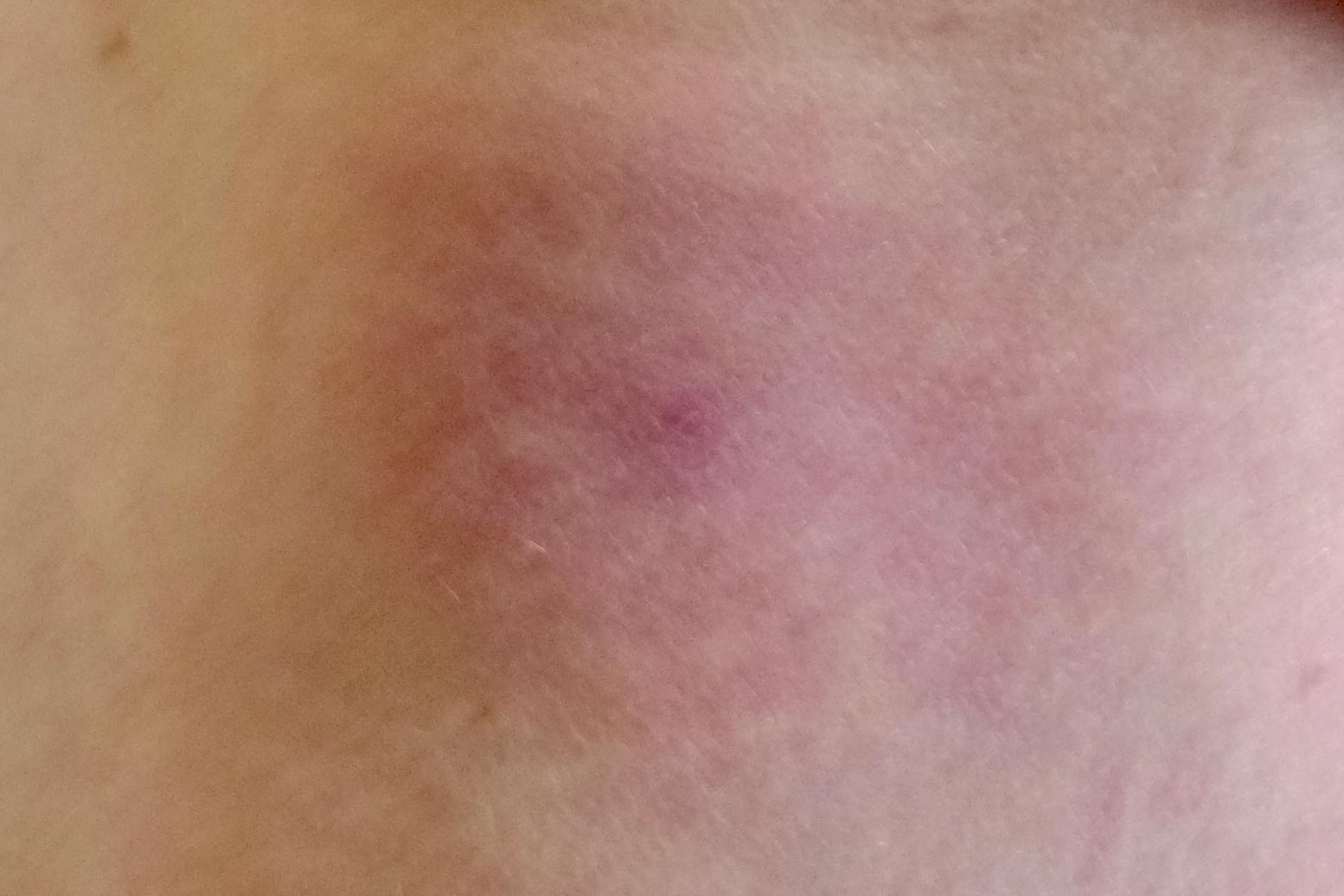
Knowing that some ticks can carry Lyme Disease I kept a careful check on the little red spot. After a few days a red patch began to form around it, and after a week a large raised circular swelling at least 100mm (4") wide had appeared. But I had no itchiness or pain from the bite or during the swelling.
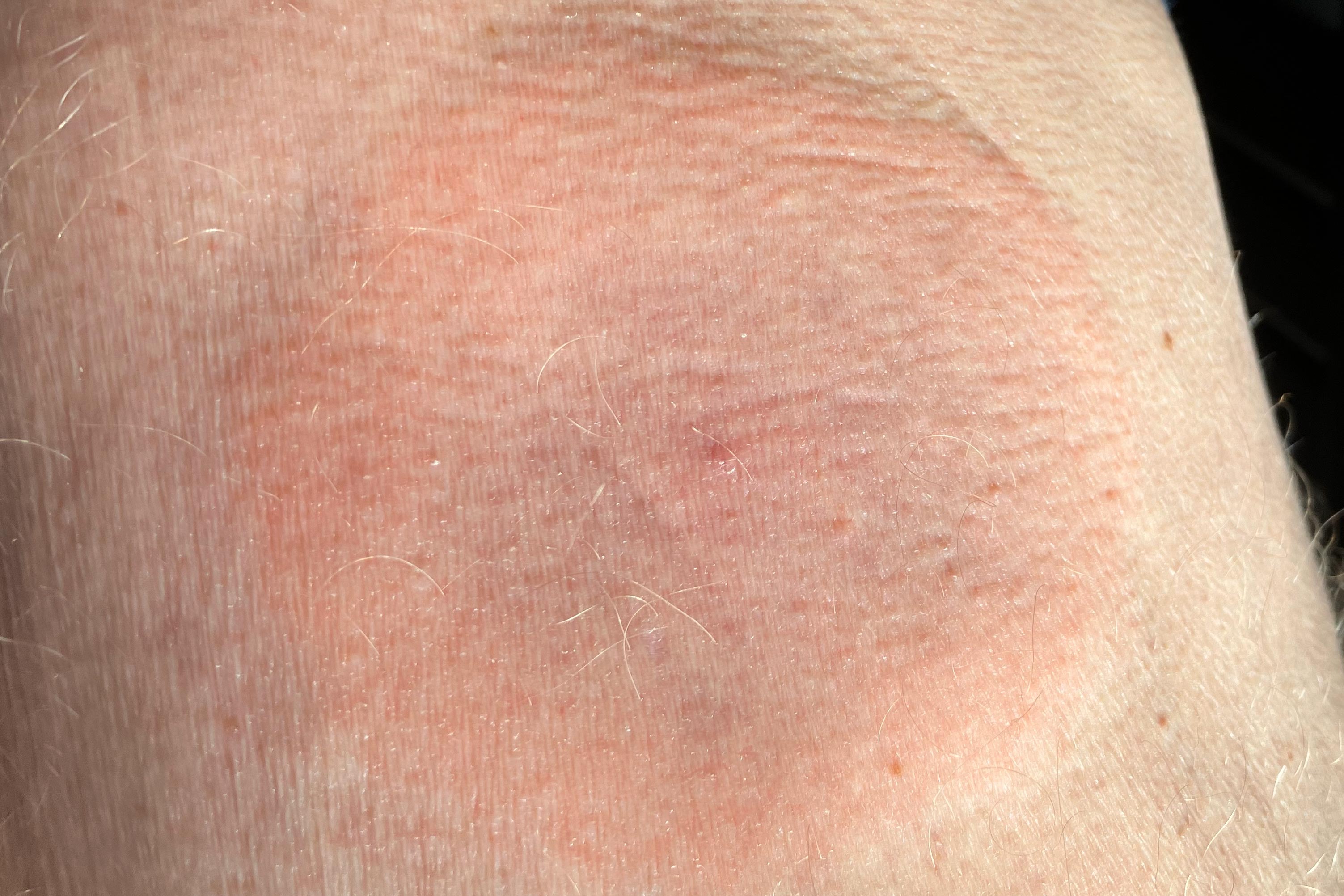
I knew that a circular "bullseye" swelling was an early indication of being infected with Lyme Disease, so I contacted my doctor straight away and was instantly put on a three week course of strong antibiotics.
Later I found out that if you remove a tick within 24 hours, you can greatly reduce your chances of getting Lyme disease. This is where I went wrong!
Lyme Disease can cause all sorts of health problems. Sometimes there are no visible signs like I had, but there may be other symptoms like headaches, feverishness and tiredness at the time. If untreated, a person can, months or years later, suffer from joint pains, swollen joints, shooting pains or tingling in the arms and legs, or become ill with all sorts of complications like loss of movement to the sides of the face, severe headaches, neck stiffness or heart palpitations.
You have been warned!
photowalker.uk
All photos © Martyn Pearce